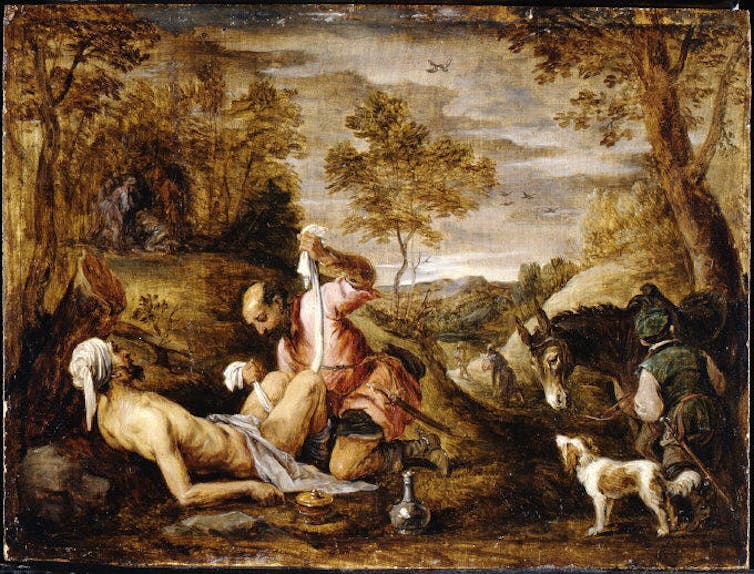(The Conversation) — An individual’s “right to die” is becoming more accepted across the globe. Polls show that most Americans support allowing doctors to end a patient’s life upon their request. Assisted suicide is now permitted in 10 U.S. states and in Washington. In 2025,five more states are set to consider “right to die” legislation.
The “right to die” can refer to several means of dying. In “euthanasia,” death can either be “voluntary” – when a physician administers lethal drugs with the patient’s consent – or “nonvoluntary,” without a person’s consent, as when a person is in a vegetative state. In such cases, consent is usually given by a legal guardian or relative.
By contrast “assisted suicide” refers to a person being aided in ending their life by being given lethal drugs and then administering the dose themselves. This practice is sometimes called “assisted dying.” These terms make crucial distinctions between who carries out the final act of ending life.
Worldwide, euthanasia and assisted death rates have risen in recent years.
In 2023, almost 1 in 20 deaths in Canada were from assisted dying; in the Netherlands, the number reached 5.4% from assisted dying and euthanasia. The Netherlands has also legalized assisted dying related to mental disorders, not just terminal illnesses.
In November 2024, an assisted dying bill passed the British parliament, with a similar bill now pending in Scotland. Assisted suicide and euthanasia are already legal in Spain, Belgium and Luxembourg, among other countries in Europe and Latin America.
The right-to-die debate
Advocates of a person’s right to die argue that individuals should make their own end-of-life decisions because it is their life – and their death. Advocates also maintain that euthanasia and assisted suicide not only prevent further suffering, but also safeguard an individual’s dignity by avoiding senseless pain and severely diminished quality of life.
However, right-to-die advocates have critics; among the more forceful ones is the Roman Catholic Church. For example, speaking about the potential legalization of euthanasia in France in 2022, Pope Francis argued that euthanasia, in all its forms, only leads to “more killing.”
But as a scholar of Catholic thought and practice, I also recognize that the Catholic position is a nuanced one. It opposes euthanasia and assisted dying, but it does not support extraordinary or disproportionate treatments when unavoidable death is close at hand.
‘A sin against God’
Francis has called euthanasia and assisted suicide “a sin against God.” He also has linked euthanasia to abortion, saying, “you don’t play with life, not at the beginning, and not at the end.”
The fullest, most recent explanation of the Catholic view on the right to die can be found in the 2020 Vatican letter “The Good Samaritan,” a title that refers to the biblical story of a stranger who was the only one to assist a man beaten and stripped by robbers.

The parable of The Good Samaritan.
David Teniers the Younger/ The Metropolitan Museum of Art
Agreeing with many other Christian denominations, “The Good Samaritan” letter makes the point that our lives are not our own but belong to God. As God’s creations, we do not have the right to end our own lives. Euthanasia also involves a doctor actively killing their own patient. Euthanasia and assisted suicide thus violate the biblical commandment “thou shalt not kill.”
Beyond this basic point, the letter maintains that euthanasia undermines society because the right to life is the basis of all other rights. Also, debates about “quality of life” can lead to the idea that “poor-quality” lives have no right to continue.
A failure of love
“The Good Samaritan” letter observes that human beings are joined together by compassion – a word that literally means “co-suffering.” In the letter’s words, which have been repeated by Francis many times, euthanasia is “false compassion” because it ignores the “spiritual and interpersonal aspects” of human life such as accompanying – or simply being with – someone in and through their suffering.
Connected to this opposition to euthanasia and assisted suicide is a point that Francis often makes about “throwaway culture,” which “discards” the poor, needy and dependent. In Francis’ words, euthanasia is “a failure of love.”
End-of-life care
Given the Catholic church’s stand against assisted suicide and euthanasia, it might seem surprising that the church does allow refusing “overzealous” treatments that prolong suffering in the face of unavoidable death. Such procedures could include mechanical ventilation or dialysis, for example.
Catholic ethics would point out that killing is a basic part of the act of assisted suicide and euthanasia. Killing is also the intent behind the action.
But declining disproportionate treatment is not intended to kill the patient, although death is the foreseeable outcome. Death is the result of the disease, not the result of a method that actively ends the patient’s life. Also, even in terminal cases, normal care, such as providing nutrition and hydration, should be continued unless it causes additional pain.
A difference that matters
In the Catholic Church’s view, it matters that there is a difference between assisted suicide and euthanasia, on the one hand, and discontinuing disproportionate care, on the other. The difference lies in the nature of particular actions and the intent behind them.
And the difference also matters in a broader sense. In the debate between right-to-die advocates and those who, like Francis, oppose them, there are very different understandings of how society should respond to those who suffer.
(Mathew Schmalz, Professor of Religious Studies, College of the Holy Cross. The views expressed in this commentary do not necessarily reflect those of Religion News Service.)
![]()
Original Source: